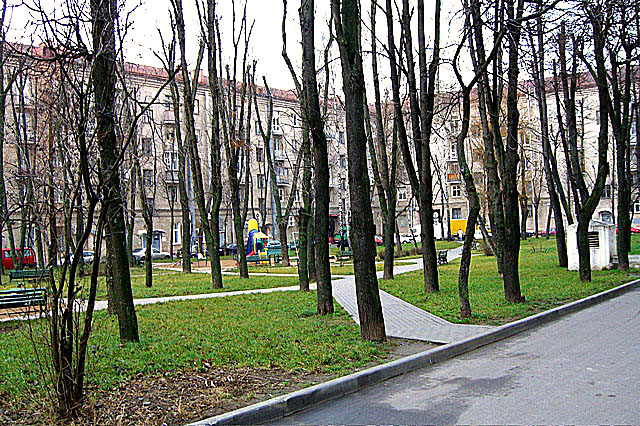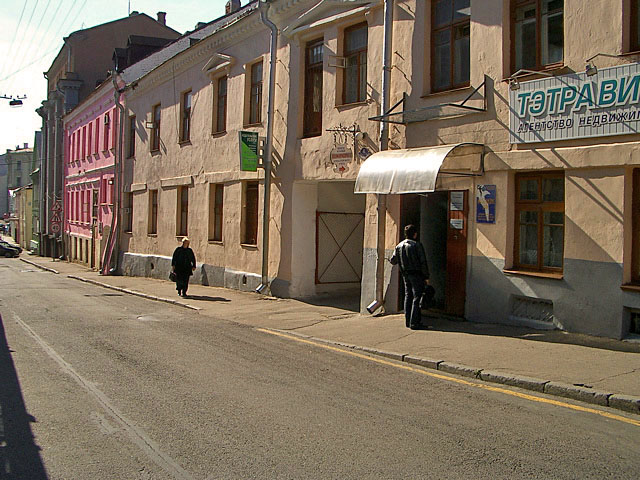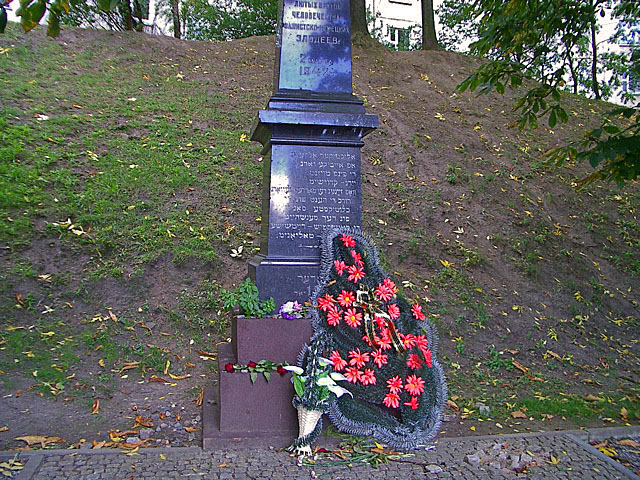Minsk Now
| . | |||||||||||||||
Minsk courtyard, 2005
Much of the housing in Minsk is built around central courtyards. The houses face the courtyard rather than the street; one, or more often several, large gates connect the courtyard to adjacent streets. People who live in the same courtyard are likely to become acquainted with each other, because one must walk through the courtyard in order to reach one's apartment. Much of the housing in the ghetto was also grouped around central courtyards, though the houses and the courtyards were much smaller than in this photo.
The courtyard structure made it possible for information to spread through the ghetto very quickly without attracting the attention of the Germans. Any ghetto resident who saw a German kill a Jew, or who heard a rumor of impending German violence in the ghetto, would tell his or her neighbor. The news would spread quickly from household to household through the courtyard, from that courtyard to adjacent courtyards, and so on until everyone in the ghetto knew what had happened. This ghetto news system was extremely helpful in warning Jews of impending German pogroms or other actions. False rumors of course travelled as quickly and as far as accurate information.
International Street, just outside the former Minsk ghetto, 2005
Minsk was bombed extensively during the war, first by the Germans, in the first days of the war, and then by the Soviets, during the German occupation. By the end of the war little of pre-war Minsk remained; most of contemporary Minsk was rebuilt in the years after the war. The ghetto was the one part of the city that the Soviets had no interest in bombing. When Soviet bombing raids took place, members of the underground would leave the ghetto and use flares to identify important targets to the pilots of Soviet planes overhead. International Street, just outside the ghetto, is one of the few streets in Minsk that was not bombed and that looks much as it did before the war.
Revolution Street, just outside the former Minsk ghetto, 2005
Raissa Chasanyevich, whose Jewish name was Riva Sherman, passed as a Tatar during the war (and thus used the name Chasanyevich). Though she lived in the ghetto for much of the war, she joined an underground group outside the ghetto and often went in and out of the ghetto in the course of her underground work. When she was outside the ghetto she stayed in the basement of a house on Revolution Street.
Memorial to murdered Jews of the Minsk ghetto
On March 2, 1942, the Germans took approximately 5,000 Jews from the Minsk ghetto to an area just outside the ghetto called "the pit" (Yama, in Russian), shot them, and buried them in the pit. In 1946 a memorial to the Jews murdered on that day was erected on that site. The inscription on the memorial is in Yiddish as well as Russian; it describes those who were murdered as Jews. The vast majority of Soviet memorials to Jews murdered during the war were in the Russian language alone, and described the dead as "peaceful Soviet citizens" rather than as Jews. The mention of Jewish victims, and the use of Yiddish, in the Yama memorial, may have been possible because in 1946 the anti-Semitic Soviet "anti-cosmopolitan" campaign had not yet begun.
|



